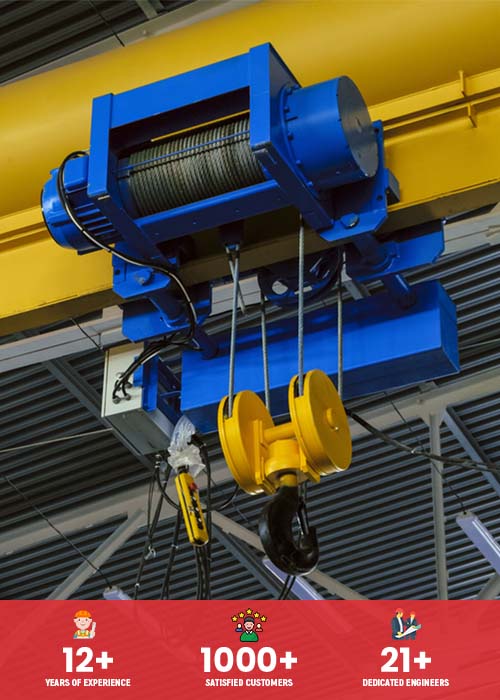How to optimize overhead crane for maximum hook coverage
Hook coverage or working span regulates a crane hook’s ability to reach multifarious areas. It covers all prime motions of the hook in X, Y, and Z dimensions (from the floor’s coverage area to the coverage area of the uppermost height of the hook). Hook coverage depends on how close a crane’s hook can move to the end of the bridge and runway. Good hook coverage will not only increase the efficiency and profitability of your facility unit, but also enhances the profitability and productivity. If you are planning to purchase a crane from an eminent EOT crane manufacturer in Ahmedabad, you should have adequate knowledge of hook coverage.
By optimizing hook coverage, you can maximize the crane’s efficiency and flexibility.
How to determine hook coverage
You can determine hook coverage in various ways including,
The side Approach
To determine the crane’s usable lateral working span, you can use this side approach. But this is typically not a symmetrical dimension. The hoist trolley comes with a short and a long side. When installing a crane, you can determine the short and long sides to ensure the side approach span is adequate.
The end Approach
The end approach determines the hook’s centreline coverage, including end-to-end movement. Unlike the side approach, this approach is symmetrical. Based on runway length, the entire span of the crane may be larger than the actual working span. When you need extra hook coverage, a zero-clearance end stop can provide approximately one foot of lateral or centreline coverage. When determining the hook coverage of your crane, you should have adequate knowledge of working space. The floor-to-ceiling height along with walls and objects in the work area may limit the hook’s working span. You should consider any changes and optimizations before the completion of the project. If your project gets completed, optimizing the working span could be an expensive endeavour and may inhibit your daily productivity.
Measuring crane size requirements to maximize coverage
To maximize hook coverage, proper measurements are mandatory. Important measurements include,
Runway beam size
You need to measure the runway beam size from the bottom to the top of the beam. This measurement is useful to determine the approximate system height.
Runway rail size
The runway rail size influences the wheel size of the crane. The runway rail height and width are crucial measurements for your crane. Because these two keep the rails in alignment and get the most longevity.
Crane span
The crane span is the measurement between runways. This generally covers the width of the bay. Exact measurements are mandatory if you want to procure adequate material to form the girders and provide accurate drawings.
Runway length and distance between runway supports
The runway length and runway support measurements go side by side. The supports should hold the weight of the crane relative to the runway length.
Common mistakes
A common mistake that people often commit is not planning far enough into the future. Though you can update your existing crane to improve hook coverage, it is not recommended. Because this can be a time-consuming and expensive endeavour. If you want to improve your existing crane’s hook coverage, you need to replace major components and sometimes rearrange electronics. This can hamper your operations.
To plan for optimal hook coverage, you should have adequate knowledge of your building space, including obstructions on the walls, ceiling and floor. The hook coverage area of your crane is always less than the total span of the crane or length of the runway. You should ask the right questions to your crane builder to avoid change orders and to uplift the profitability of your production.
Always optimize your crane to get the best hook coverage possible, because you may need more coverage than you planned.
As an established EOT crane manufacturer in Ahmedabad, Krishna Crane Engineers has an excellent market reputation. The company designs jib cranes by strictly following the standards of IS 3938 and IS 807. We offer custom cranes that are robust, sturdy and can manage very heavyweights. We used to work for diverse customers from various industries, including manufacturing industries, shipping yards, ports, construction companies, transport and logistics companies.
By visiting the website of the company, you will know more about it.




